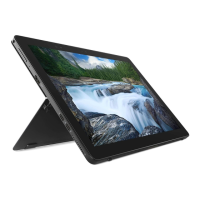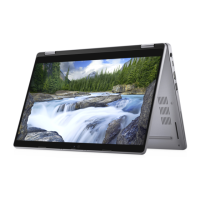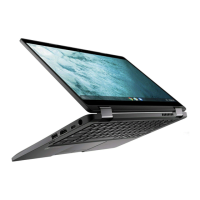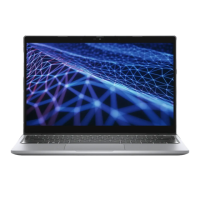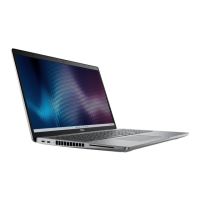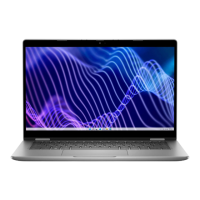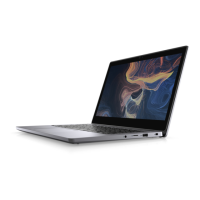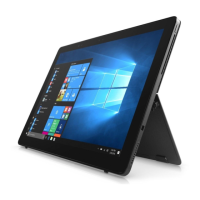
Do you have a question about the Dell Latitude 5285 2-in-1 and is the answer not in the manual?
| Graphics | Intel HD Graphics 620 |
|---|---|
| Operating System | Windows 10 Pro |
| Bluetooth | Bluetooth 4.2 |
| Processor | Intel Core i7-7600U |
| Display | 12.3" FHD (1920x1280) Touchscreen |
| Memory | Up to 16GB DDR4 |
| Storage | Up to 1TB PCIe SSD |
| Battery | 42 WHr integrated battery |
| Ports | 1 x microSD card reader, 1 x headphone/microphone combo jack |
| Wireless | Intel Dual Band Wireless-AC 8265 |
| Webcam | 8MP camera |
Details the types of Intel Core processors available, including core counts, cache, and clock speeds.
Outlines the chipset integrated into the processor and the DRAM bus width, specifying memory architecture.
Describes the memory connector type and capacity, specifying onboard memory configurations.
Lists video output types, UMA controller, and external display adapter support via USB Type-C.
Details audio types, controller, stereo conversion, internal/external interfaces, speakers, and volume controls.
Lists audio, video, memory card reader, and USB port types and their specifications.
Covers wireless LAN, mobile broadband, and WiGig options, detailing specific adapter models.
Specifies front, rear, and IR camera types, sensor technology, imaging rate, and video resolution.
Provides details on display type, touch capability, glass protection, luminance, height, and width.
Lists AC adapter types, voltage, current, frequency, weight, dimensions, and temperature ranges.
Details battery types (32Whr, 42Whr) and their specifications, including length and voltage.
Covers weight, voltage, and dimensions for tablet-only and tablet+keyboard configurations.
Outlines operating and storage temperature and humidity ranges for the device.
Instructions on how to deploy the tablet's kickstand for positioning on a surface.
Safety guidelines and preparation steps before accessing internal components of the tablet.
Procedures for safely shutting down the tablet using the power button or charms menu.
Steps to reassemble and secure the tablet after performing internal work.
Guide on inserting microSD and micro-SIM cards into their respective slots.
Information about the system's 45 W or 65 W Type-C power adapters and safety warnings for use.
Lists the specific Intel Core processors the Latitude 5285 is shipped with, including model and specifications.
Step-by-step guide to finding processor information using Windows 10 Device Manager.
Instructions on how to check processor utilization using the Windows Task Manager performance tab.
Steps to monitor processor performance details using the Windows Resource Monitor.
States that the chipset is integrated on the processor.
Guide to locating chipset information in Windows 10 Device Manager under System Devices.
Details the supported memory configurations for the Latitude 5285, including type and speed.
Instructions to check system memory details by entering the BIOS setup.
Steps to verify system memory information within Windows 10 settings.
Guide on how to run the ePSA diagnostic utility to test system memory.
Provides specifications for the tablet's 12.3" touchscreen display.
Steps to identify the display adapter using Windows 10 Device Manager.
Instructions on adjusting the display's screen resolution through Windows settings.
Describes the front-facing (5 MP) and rear-facing (8 MP) cameras.
Guide to locating camera devices in Windows 10 Device Manager under Imaging devices.
Explains how applications initiate the camera functionality.
Steps to launch the Camera application from the Windows Start menu.
Lists the supported types of internal storage drives (M.2 SATA SSD, M.2 PCIe NVMe SSD, SED).
Instructions on how to check hard drive information by accessing the system's BIOS.
Steps to access BIOS setup using volume buttons when no keyboard is connected.
General overview of configurable options within the system setup utility.
Details primary hardware features in System Information, including BIOS version and processor details.
Configures various system settings including boot order, USB ports, and audio features.
Allows adjustment of display brightness based on power source.
Manages administrator, system, and strong passwords, including configuration and bypass options.
Enables or disables the Secure Boot feature and manages related security keys.
Configures Intel SGX features and enclave memory size for secure environments.
Adjusts processor performance settings like multi-core support and SpeedStep.
Controls tablet power behavior, including AC connection response and auto-on times.
Manages system boot behavior, including adapter warnings, keypad settings, and fast boot options.
Enables or disables Intel Virtualization Technology and related features like VT for Direct I/O.
Allows enabling or disabling internal wireless devices such as WWAN/GPS, WLAN/WiGig, and Bluetooth.
Manages service tags, asset tags, BIOS downgrade, and data wiping features.
Provides access to view and clear system setup events like BIOS, thermal, and power events.
Instructions for updating the system's BIOS from the Dell support website.
Explains system and setup passwords for securing the computer and BIOS settings.
Step-by-step guide to setting up system and BIOS passwords within the security settings.
Procedures for modifying or removing existing system and BIOS passwords.
Overview of the ePSA diagnostic utility for testing tablet hardware without an OS.
Steps to initiate and run the ePSA diagnostic utility using the volume buttons.
Details the diagnostic features of the tablet's battery LED indicator.
Explains how battery LED blinking patterns indicate system failures.
Instructions for resetting the Real Time Clock (RTC) to recover from system issues.
Guide to identifying the specific AC adapter using the tablet's service tag on the Dell support website.

